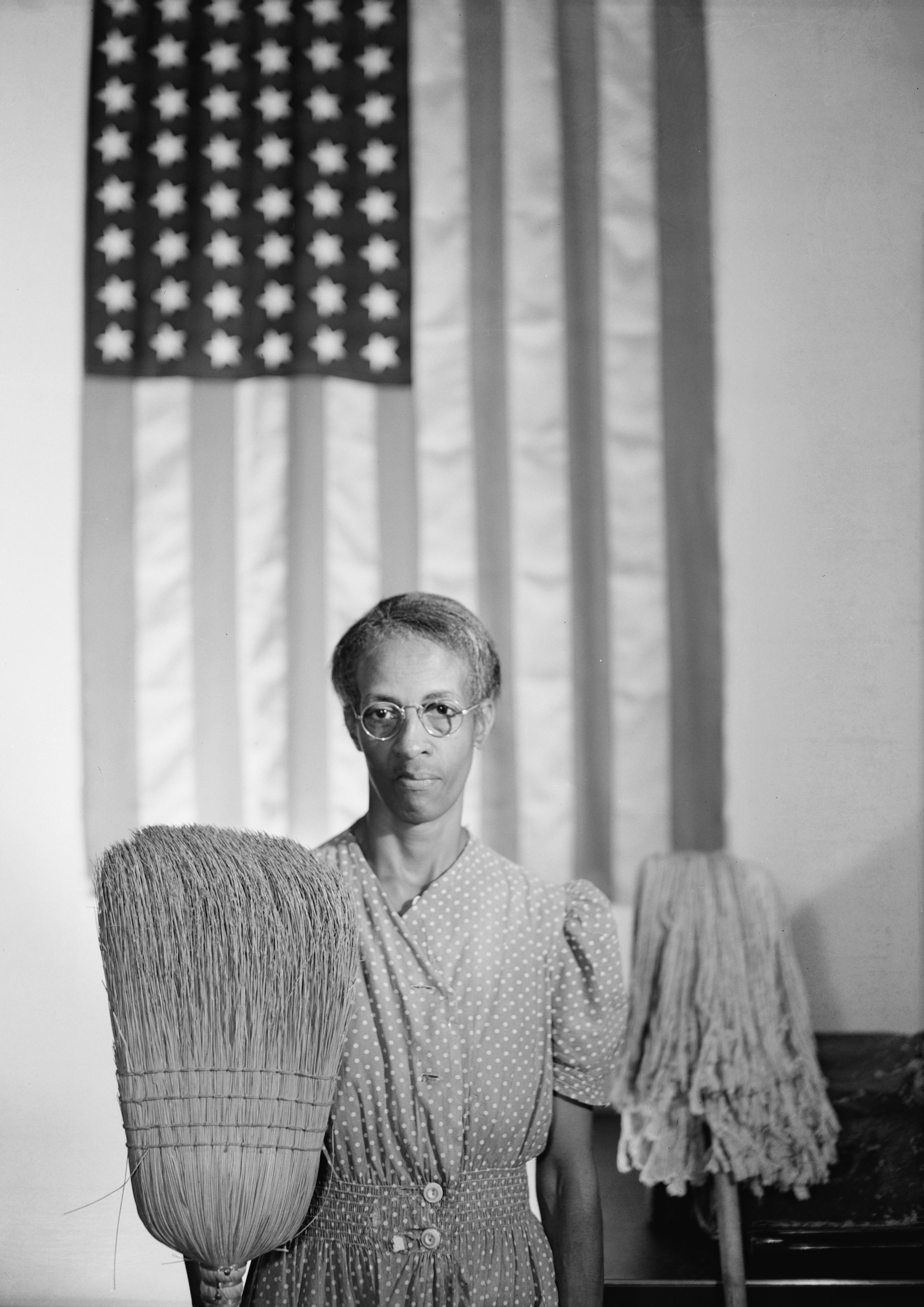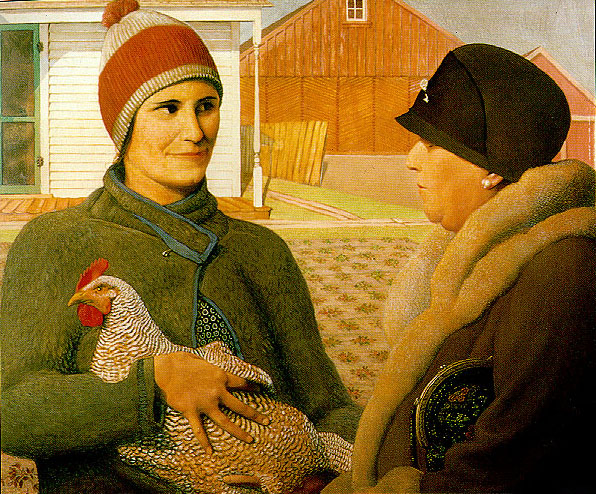High Museum of Art
Feb. 12 through May 7, 2017
Organized in collaboration with the Brandywine River Museum of Art, the exhibition features more than 200 artworks, including more than 70 from the High’s permanent collection, which encompass a wide range of media and makers—from paintings and photographs to murals and sculpture, by trained and self-taught artists, modernists and regionalists. The High’s American art, photography, and folk and self-taught art departments partnered to select works for “Cross Country” that reflect the range of creative expression and remarkable diversity of American art in the period surrounding the two World Wars.
“Through collaboration across three curatorial departments, we’ve captured the opportunity to highlight important elements from our own permanent collection in the High’s presentation of this exhibition. These include works by Southern artists and superb photography from the era that demonstrate profound contributions to the development of American Modernism,” said Rand Suffolk, the High’s Nancy and Holcombe T. Green, Jr. director.
While the 20th-century city was a significant magnet for modern artists, many sought respite and even refuge in quieter, rural areas. “Cross Country” brings together works by more than 80 artists to explore the impact of the American countryside on their artistic practice and how they adapted the modernist style to express their sense of place.
“The exhibition beautifully illustrates the deep connections between the artists, the places and the moments in history that shaped American art in the early 20th century and beyond,” said Stephanie Heydt, the High’s Margaret and Terry Stent curator of American art.
The exhibition is organized geographically, according to the region depicted in the artworks. Each section incorporates photography and works by self-taught artists to further underscore the diversity of artistic production in the early 20th century.
“Photographers and self-taught artists, particularly those working in rural areas, came to influence the artistic practice of their contemporaries,” said Heydt. “Because we’re highlighting a period in time when photography and self-taught art began to be taken seriously as art forms, we feel it is essential to spotlight this exchange of ideas in order to broaden viewers’ understanding of American art.”
The first section of the exhibition is devoted to the
South and features more than 40 works by both trained and self-taught
artists, including paintings by Jacob Lawrence and Lamar Dodd,
photographs by Walker Evans and Peter Sekaer, and drawings by Bill
Traylor. These artworks range from romantic depictions of the South’s
agricultural history to scenes of African-American life that address
themes including social justice, emotional response to place, and rural
decay and degradation. A centerpiece of this section is “Opening Day at
Talladega College,” one of the six murals by Hale Woodruff that
Talladega College commissioned in 1938 for its Savery Library. Painted
during the rise of public mural tradition in the Great Depression, the
mural transcends time, linking history to the landmark building for
which it was created.
In the other sections of the exhibition, depictions of coastal New
England, small-town Pennsylvania, Midwestern farms and other rural
regions illustrate the dispersal of standard modernist styles, such as
Cubism and Fauvism, and demonstrate the spread and gradual acceptance of
these artistic movements in the American provinces. Some of the
featured artists, including Georgia O’Keeffe, were firmly entrenched in
modernism before leaving the cities behind. Other artists, such as N. C.
Wyeth, started out in rural settings and used traditional styles but
came to adopt more experimental approaches. Included are masterworks by
such renowned artists as Grant Wood, John Steuart Curry and John Marin.“Cross Country” draws from the collections at the High and the Brandywine River Museum of Art. The exhibition features loans from institutions across the country, including the Whitney Museum of American Art, the Cincinnati Art Museum, the Smithsonian American Art Museum, the Crystal Bridges Museum of American Art and the Dallas Museum of Art. Also featured prominently are artworks from Georgia museums including the Booth Western Art Museum, the Georgia Museum of Art and Clark Atlanta University Art Galleries, among others.
Key works on view in each section include:
The South:
- Jacob Lawrence, “Firewood #55” (1942): Lawrence created this gouache, ink and watercolor on paper during his first trip to the rural South. In the work, an African-American woman sorts firewood against a sparse landscape, which emphasizes the hardships of farm life in the Depression era.
- Bill Traylor, “Untitled (Man with Pipe)” (ca. 1939–1942): Traylor was one of the first living self-taught artists to attract the notice of the art establishment in the 20th century. This pared-down work of poster paint and pencil on cardboard is drawn from the High’s collection and showcases Traylor’s distinct style, which echoes the minimalist qualities of modernism.
- Thomas Hart Benton, “Tobacco Sorters” (1942–1944): In this scene of Southern farm life, a tobacco farmer teaches a young girl about tobacco leaves. The tempera and oil on panel is among many examples included in the exhibition that illustrate the rise of Regionalism.
The Mid-Atlantic:
- Andrew Wyeth, “Road Cut” (1940): This subdued landscape, an important example of Wyeth’s realist style, depicts a country dirt road leading to an isolated farmhouse. The tempera on panel joins other works in the exhibition by his father, N. C. Wyeth, and his sister Carolyn.
- Gordon Parks, “Ella Watson, American Gothic, Washington, D.C.” (1942): Drawn from the High’s collection, this photograph of an African-American woman standing alone before the American flag, with a broom and mop in the foreground, directly references Grant Wood’s “American Gothic” painting and is one of Parks’ most famous works.
- Charles Sheeler, “Staircase, Doylestown” (1925): Sheeler is distinguished as one of the founders of American modernism. In this oil on canvas, he depicts the staircase of his 18th-century Pennsylvania farmhouse. Sheeler would return to this subject many times, in both paintings and photographs.
- Horace Pippin, “Saying Prayers” (1943): A World War I veteran who began painting in the 1920s without any formal training, Pippin rose to fame after his work was featured in a local art annual in Chester County, Pennsylvania. His scenes of American life, past and present, would go on to be celebrated by major arbiters of modernist art such as The Museum of Modern Art, New York, and the Whitney Museum of American Art.
The Midwest:
- Grant Wood, “Appraisal” (1931): In this oil on composition board, two women appear in the midst of a financial transaction: the sale of a chicken. The disparity between their clothing emphasizes the difference in socioeconomic status and the conflict between rural and urban life in America before World War II.
- Harry Callahan, “Eleanor, Indiana” (1948): Although Callahan had little formal training, he credited fellow modernists Ansel Adams and Alfred Stieglitz among his inspirations for pursuing photography professionally. In this photograph from the High’s collection, Callahan’s wife Eleanor stands atop a sand dune on the Lake Michigan shore.
The Northeast:
- Georgia O’Keeffe, “Red Canna” (1919): While visiting her husband Alfred Stieglitz’s family home in Lake George, N.Y., O’Keeffe was attracted to the canna lilies that bloomed profusely in late summer. The canna’s billowy petals and intense colors inspired O’Keeffe to create a series of paintings that includes this one, which is part of the High’s collection. Although made early in her career, this painting foreshadows the artist’s mature works with its voluptuous curves and delicately blended colors.
- Anna Mary Robertson “Grandma” Moses, “Bringing in the Maple Sugar” (1939): Men collect sap from maple trees as children frolic in the winter landscape in this oil on canvas by the renowned self-taught artist. Moses had her first gallery show in New York in 1940 at the age of 80 and over the next decade became one of the most popular artists in America.
The West:
- Maynard Dixon, “Red Butte with Mountain Men” (1935): In this monumental oil on canvas, the 19th-century scout Kit Carson and his men cross the Utah landscape, dwarfed by the majestic canyons and mesas beyond.
- Ansel Adams, “Teton Range and Snake River (Grand Teton National Park, Wyoming, 1942)” (1942, printed 1974): Perhaps Adams’ most famous photograph, this image epitomizes his style and captures the untamed American West.
The exhibition is co-curated by Stephanie Heydt, Margaret and Terry Stent curator of American art at the High; Katherine Jentleson, the High’s Merrie and Dan Boone curator of folk and self-taught art; and Brett Abbott, the High’s former Keough Family curator of photography and head of collections. “Cross Country” builds upon an exhibition of 67 artworks organized by the Brandywine River Museum of Art titled “Rural Modern: American Art Beyond the City.” The Brandywine exhibition, featuring works selected by its associate curator Amanda C. Burdan, was on view in Chadds Ford, Pa., from Oct. 29, 2016, through Jan. 22, 2017.
Exhibition Catalogue
The exhibition is accompanied by a 208-page catalogue published by Skira Rizzoli in association with the Brandywine River Museum of Art, featuring 140 color illustrations with a foreword by Brandywine Director Thomas Padon and essays by Burdan; Christine Podmaniczky, curator of N. C. Wyeth Collections and Historic Properties at the Brandywine; Betsy Fahlman, professor of art history at Arizona State University’s Herberger Institute for Design and the Arts; Jonathan Frederick Walz, director of curatorial affairs and curator of American art at The Columbus Museum; and Catherine Whitney, chief curator and curator of American art at Philbrook Museum of Art, Tulsa. Support for the catalogue has been provided by the Wyeth Foundation for American Art.
.jpg)









